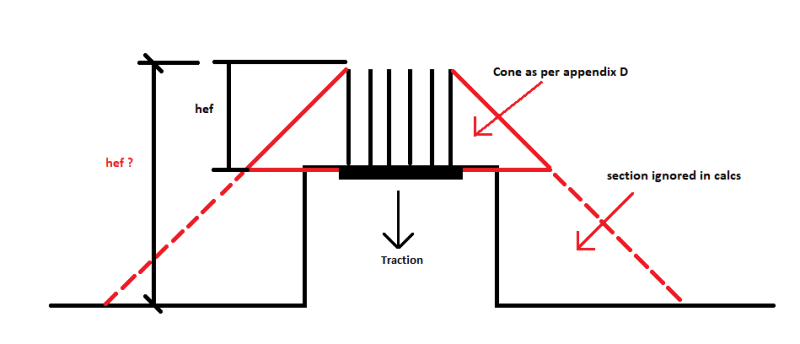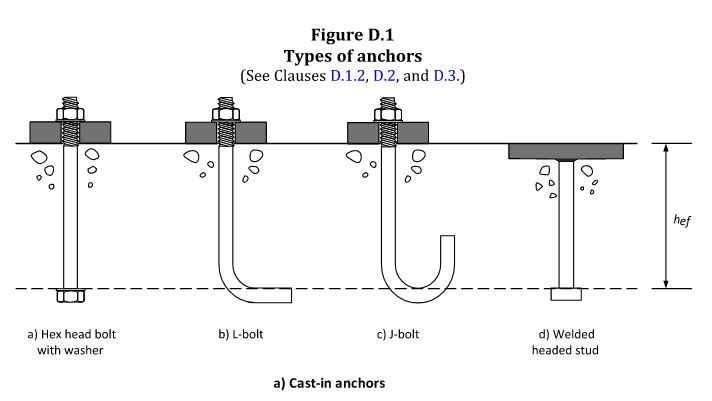I would give you a solid 'it depends'. If the cutout is small compared to the breakout cone I'd say you could probably ignore it. I don't know what 'small' means exactly, though.
Your problem is going to be looking for mechanisms that aren't normally checked for because they inherently won't govern in normal construction that may end up governing here.
There are a few problems.
You may potentially need to resolve tension along the face of the inset piece where the anchor plate is if the full cone is taken as bridging between two support points.
Do you have enough space within the cone boundaries to pass your force? Can you dimensionally fit a strut, for instance, in the most confined point.
In parallel with the last one but from a different model of concrete, is there a shear breakout mechanism that is higher energy than the normal one in most cases but could happen here. i.e. what happens as the angle of the potential failure plane gets steeper so it intersects with the less deep portion. It gets harder to break but it still isn't full compression bearing capacity (for instance, the enhanced shear provisions as you approach supports in some codes would presumably be a similar thought process). Same thing where whether this is important will depend on your various dimensions. There's some point where it's obvious that it can't breakout and there's only a potential pullout.
Your partial cone zone each side of that hole is two half triangles that are unconfined on one side. Draw a free-body diagram of that and think about it for a while. It's going to want to rotate. If the hole is small then you'll get some pretty good support in the third dimension, but it depends.
The pullout mechanism is definitely the smaller height and might govern even if you justify breakout somehow.
edit: what your reinforcement looks like is going to make a reasonable difference.




